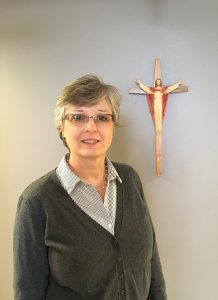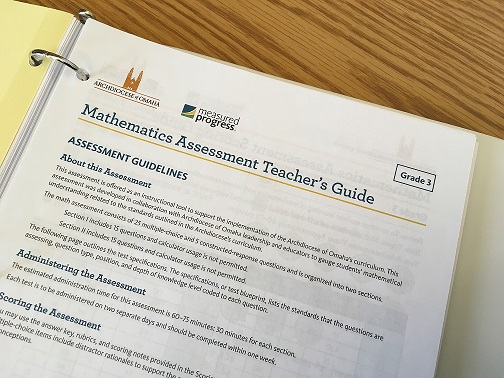The following article was contributed by Vickie Kauffold, Administrator of Curriculum Standards and Assessment in the Archdiocese of Omaha.
Navigating through the world of assessment brings with it a variety of choices. Selecting the right assessment path can be overwhelming and perhaps a bit confusing. Are you looking for standardized norm-referenced assessments, standardized criterion-referenced assessments, computerized diagnostic assessments, performance assessments, informal classroom assessments, or formal end-of-unit assessments? The choices seem to be endless! It can be paralyzing if you are not the assessment expert at your school.
Let’s start with answering a simple question; what is the purpose for the assessment you are selecting? Are you wanting to track student growth or are you interested in measuring proficiency levels? In the State of Nebraska, all non-public schools are required to have an assessment plan to measure student success in achieving academic content standards, and we are also required to give a whole grade norm-referenced assessment using a national assessment instrument. For the Archdiocese of Omaha, this means that one part of our assessment journey is focused on measuring proficiency levels.
Each summer a team of dedicated content area specialists work to develop and revise the Archdiocesan Standards, tackling one content area each year. The summer of 2016 marked my first encounter with the Archdiocese team charged with revising the Archdiocesan Science Standards. Typically, this team of educators also reviews the Archdiocesan assessments that measure student proficiency levels at key grade levels. Many of these assessments are designed as performance assessments, which require students to perform a given task instead of selecting answers on a written test. Performance assessments provide students wonderful opportunities to demonstrate their understanding of a particular skill or perhaps several skills if the assessment is designed for that purpose. As I became more familiar with these performance assessments in my first year at the Archdiocese of Omaha, some questions formed in my mind. What if the performance assessment only measures a couple of the standards? This wouldn’t be a solid indication of proficiency levels on those standards. Then add this concern, what if each teacher in the Archdiocese administers and scores this performance assessment slightly differently, adding their own twist or altering some aspect of the assessment design. Does that really give an accurate sense of how well students are performing on the Archdiocesan Standards? The answers were clear, we needed a change.

This discovery set me on a new path to work with a company that specializes in developing quality assessment questions that measure proficiency levels on a wider range of standards that we determined were most critical. The company selected was Measured Progress. Their Assessment Services experts worked with me and a small group of educators to evaluate our current assessments. In this process, we steered away from performance assessments and started down a path that was more standardized.
This spring is the first opportunity for our teachers to put the new assessments to the test. I am already hearing positive feedback on the assessment change. The next challenge will be to generate data from these assessments. We will be looking at the data to make decisions that will guide instruction or perhaps even make changes in curriculum. The data will help us ensure that the students are learning the skills they need to master the standards.
Which assessment path are you traveling on? Are you looking into summative assessments with the use of standardized methods to measure student growth at the end of the year or are you looking into formative assessments that continually monitor student growth through formal and informal methods throughout the year? As we continue to think about different assessment paths, we have to acknowledge that whether your current path is summative assessments or formative assessments, these two paths will overlap. It is in the effective use of formative assessments that we successfully prepare our students to demonstrate their mastery on standardized summative assessments. The effective use of formative assessments also includes a discussion about data analysis, and that is a whole other blog topic!
2018 NCEA New Directions Assessment Conference
June 18-20, 2018
The Inn at Penn, A Hilton Hotel
3600 Sansom Street I Philadelphia, PA 19104
Archdiocese of Philadelphia
The 2018 NCEA New Directions Assessment Conference (Assessment 2018) will provide top level education on how Catholic schools can implement a comprehensive assessment program to monitor student progress and inform decision-making regarding instructional programs. Register today!

